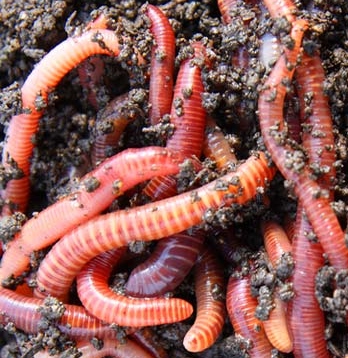Indicators on Red Wiggler Express You Should Know
Indicators on Red Wiggler Express You Should Know
Blog Article
Fascination About Red Wiggler Express
Table of ContentsRed Wiggler Express Fundamentals ExplainedSome Of Red Wiggler ExpressRed Wiggler Express for BeginnersThe Ultimate Guide To Red Wiggler ExpressHow Red Wiggler Express can Save You Time, Stress, and Money.
And the growing Red Worm population? Even in the heap that was established up directly in front of backyard composters with existing Red Worm nests.
Numerous selections, including Red Wigglers, European Nightcrawlers, and Lumbricus types were brought over from the European continent. However here's the thingNative or otherwise - and as talented as they go to being able to survive in a wide-range of atmospheres and problems -. Simply put, they are much more likely to socialize in any type of energetic composting systems you have actually established up, than they are to stroll off and begin spoiling the setting.
Origins need oxygen for respiration and rely upon smooth airflow within the soil to thrive. However, when it rainfalls, soil can become saturated with water, decreasing the oxygen offered and hindering vitamins and mineral absorption - Red Wigglers For Bait. To preserve an ideal balance, the soil must allow water to drain pipes adequately, leaving sufficient area for air to support origin health
The Ultimate Guide To Red Wiggler Express

When it involves worms for composting, what comes to mind? If you were an earthworm dog breeder, dealership, or simple garden enthusiast, then you 'd understand that red wiggler worms are the excellent worms for vermicomposting. To find out more about these earth marvels, checked out via several of the red worm facts listed below.
(https://www.pennysaverusa.com/services/agriculture-industry/agriculture-farming/red-wiggler-express_i15540782)If they extend their bodies, you'll be able to see the red stripes on their skin. When increasing worms such as red wiggler worms, you need to be able to recognize exactly how to make excellent use of them. When you have the ability to keep and care for their habitat well, and also feed them the ideal kinds of organic wastes, then they'll be able to produce nutrient-packed and quality-rich worm spreadings for you (additionally recognized as worm poop or compost).
Getting My Red Wiggler Express To Work
What do worms eat? Well, these red wriggler worms can be fed with kitchen area scraps and garden wastes. Any rotting organic things will certainly do like vegetable and fruit peels, smashed egg coverings, utilized tea bags, coffee grounds, turf clippings, completely dry leaves, and others. Make certain not to feed them foodstuffs that are oily, citrusy, or has meat or dairy products in them.

This habits makes them fit permanently in worm bins, compost heap, and various other confined areas where natural waste is bountiful. Producing an optimum setting for red wigglers needs a thoughtful technique. Consider the adhering to vital components to take care of red wigglers in your home and ensure their well-being: Utilize a bed linens of shredded newspaper or cardboard.

Red wiggler worms replicate by laying little, lemon-shaped eggs in protective cocoons. These cocoons are typically transferred in the bed linens and hatch into child worms within a few weeks.
Red Wiggler Express for Dummies
Their versatility and resilience have actually made them a prominent selection for vermicomposting in numerous regions worldwide. Yes! They can make it through from a series of 32F to 90F. They are very versatile pests. Take into consideration safety procedures for very extreme temperature levels such as: Insulating the worm bin with layers of straw or leaves.

Just keep in mind - you can constantly include more food later on (however it's hard to get rid of feed once it's been added to a container!).
Since I fed the red wigglers and compost worms as well much, they weren't able to keep up and gradually the older food went leftover and produced anaerobic conditions that killed the worms. Fortunately is that there are extremely easy activities you can take to guarantee this doesn't take place! Right here're the 6 principles for how typically and exactly how much to feed your worms: Rule # 1: Moderation! You can constantly add even more food later on.
Red Wiggler Express - The Facts
Uneaten food will certainly result in anaerobic problems that will eliminate your live worms. It is alright to sprinkle a little of their original bedding (which must currently be in the bin) over the food, however the food needs to never be buried and ought to be visible to your eye. Rule # 5: See guideline # 1! Rule # 6: After the very first feeding, feed the worms 1/3 to 1/2 of their weight.
Report this page